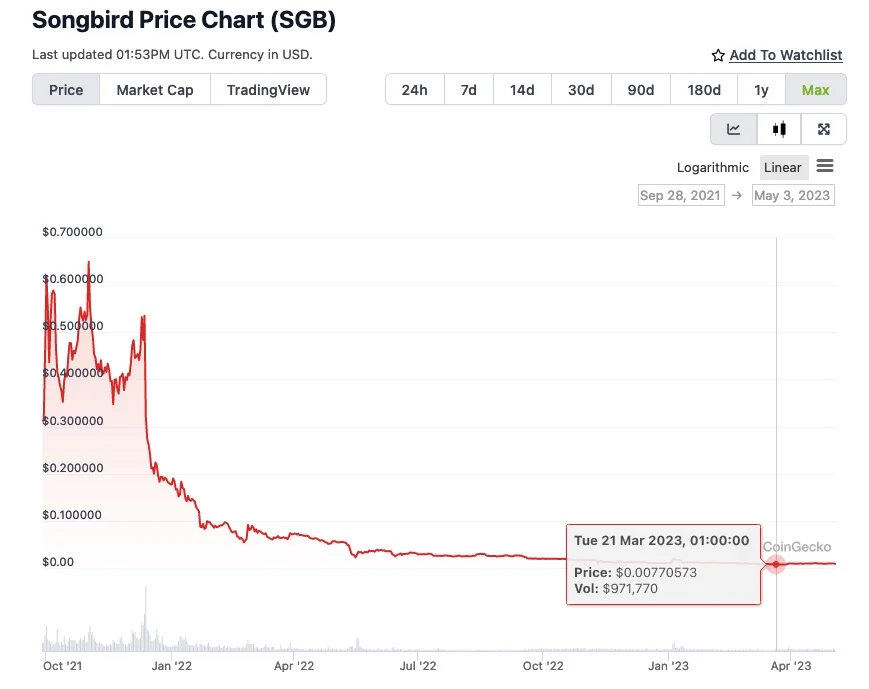Discover what is ATL in crypto, its significance, and how it impacts market sentiment. Master the art of analyzing historical performance in crypto.
The world of cryptocurrencies is filled with jargon and technical terms that can be confusing for newcomers. One such term you might encounter is “ATL” or “All-Time Low.” In this article, we will explore what is ATL in crypto, how it’s determined, and its significance in the cryptocurrency market. By understanding this concept, you will be better equipped to navigate the complex world of digital currencies.
What is ATL in Crypto – Definition
ATL, or All-Time Low, refers to the lowest price a cryptocurrency has ever reached since its inception. It is a crucial metric for traders and investors alike, as it provides insight into the historical performance of a digital asset. Knowing the ATL of a cryptocurrency can help you make more informed investment decisions and better understand market trends.

How is ATL Determined?
To determine the ATL of a cryptocurrency, you need to look at its entire price history. This information can typically be found on price-tracking websites or through APIs that provide historical price data for various cryptocurrencies. The all-time low is the lowest price point a cryptocurrency has reached since it started trading on exchanges.
Keep in mind that prices may vary between different exchanges, so the ATL of a cryptocurrency might differ depending on which exchange you’re looking at. However, most price-tracking websites and tools use an aggregate of data from multiple exchanges to provide a more accurate representation of a cryptocurrency’s ATL.
Why is ATL Significant?
Understanding what is ATL in crypto is important for several reasons:
- Historical Performance: ATL serves as an essential indicator of a cryptocurrency’s historical performance, giving investors a benchmark to compare its current price with its past lows.
- Risk Assessment: By analyzing a cryptocurrency’s ATL, you can assess the potential risk associated with investing in it. A digital asset that has consistently reached new lows might be considered a riskier investment than one that has shown more stability.
- Buying Opportunities: When a cryptocurrency’s price is near its ATL, it may present a buying opportunity for investors. The idea is that the asset might be undervalued and could rebound in the future, providing significant returns.
- Market Sentiment: ATL can be an indication of market sentiment. If a cryptocurrency’s price is consistently dropping and reaching new all-time lows, it might signal a bearish market or a lack of confidence in the project.
ATL and Market Sentiment
ATL can be an excellent barometer of market sentiment. If a cryptocurrency’s price is consistently dropping and reaching new all-time lows, it could be a sign of a bearish market or a lack of confidence in the project. Conversely, if a cryptocurrency is maintaining its value or experiencing growth, it could indicate a bullish market or increased confidence in the project.
It’s essential to keep in mind that market sentiment is not the only factor that affects a cryptocurrency’s price. Other factors, such as regulatory changes, technological advancements, and market manipulation, can also play a role. Nevertheless, understanding ATL in relation to market sentiment can be helpful in making more informed decisions about your investments.
Examples of ATL in Crypto
Let’s take a look at some examples of ATL in the crypto world:
- Bitcoin (BTC): Bitcoin, the first and most well-known cryptocurrency, experienced its ATL of approximately $0.06 in July 2010. Since then, it has reached all-time highs, making early investors substantial profits.
- Ethereum (ETH): Ethereum, a popular platform for decentralized applications, had its ATL of around $0.42 in October 2015. Like Bitcoin, Ethereum has also seen significant growth over the years.
- XRP: XRP, a digital asset for cross-border payments, hit its ATL of approximately $0.0028 in August 2013. Despite facing various legal challenges, XRP has also experienced substantial growth since its inception.
These examples show how understanding the ATL of a cryptocurrency can provide valuable context for its current price and historical performance.
How to Track ATL
Several tools and websites can help you track the ATL of various cryptocurrencies. Some popular options include:
- CoinMarketCap: CoinMarketCap provides a comprehensive list of cryptocurrencies, along with their current prices, market capitalization, and other essential metrics, including ATL.
- CoinGecko: CoinGecko is another popular website that tracks cryptocurrency prices and provides historical price data, including all-time lows.
- TradingView: TradingView offers advanced charting tools that enable you to visualize the price history of different cryptocurrencies and identify their ATLs.
By using these resources, you can quickly determine the ATL of any cryptocurrency and gain valuable insight into its historical performance.
Conclusion
In conclusion, understanding what is ATL in crypto is crucial for making informed investment decisions and gaining insight into market sentiment. By tracking a cryptocurrency’s all-time low, you can assess its historical performance, identify potential buying opportunities, and better understand the market trends that may impact its price. By leveraging tools and resources like CoinMarketCap, CoinGecko, and TradingView, you can stay informed and make smarter decisions in the world of digital currencies.